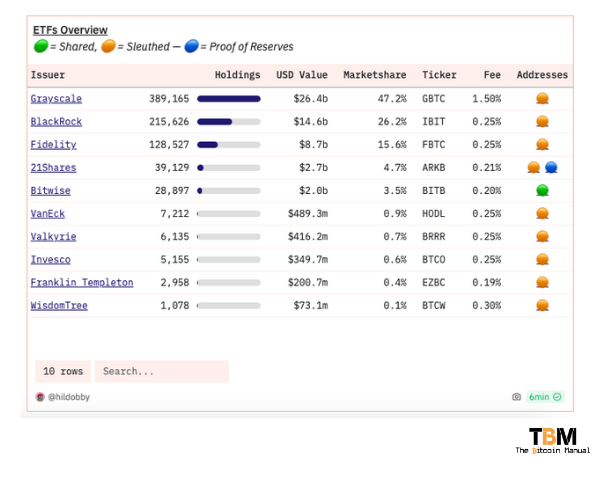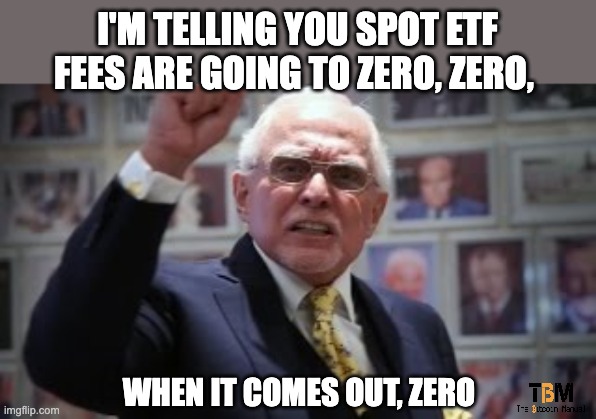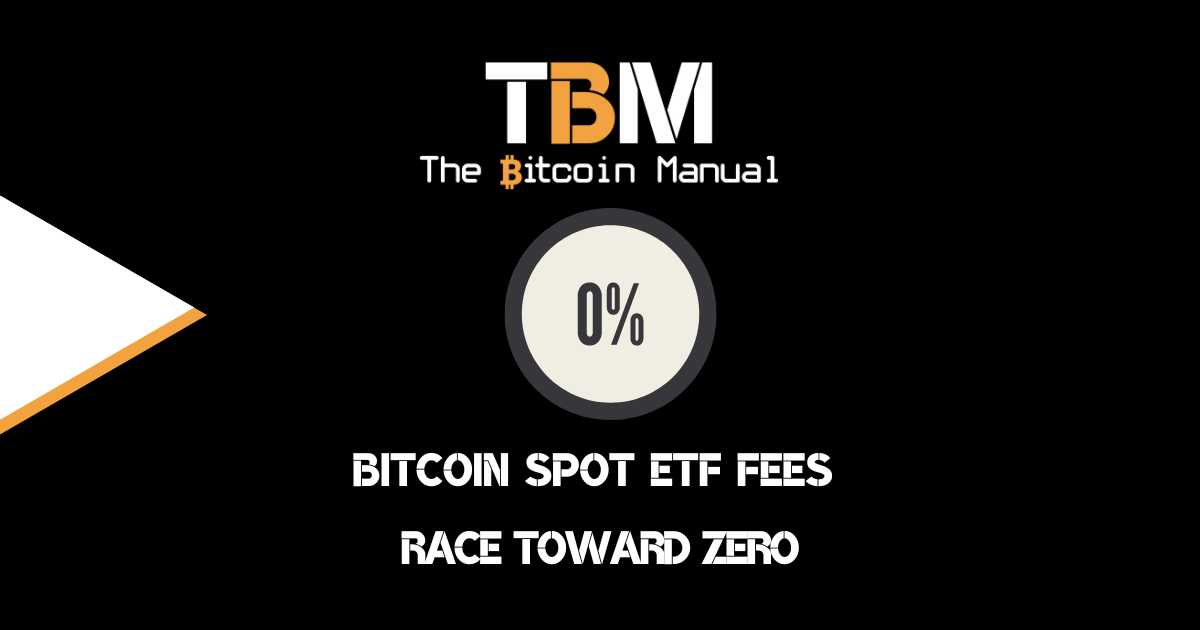The recent launch of spot Bitcoin ETFs in the US had been hyped up for several years now; we had heard the warnings: Wall Street is coming, the pensions are coming, the boomers are coming, and with this cohort would come a wave of liquidity and demand side support, the likes of which Bitcoin has never seen.
And to be frank, those people were dead on the money in terms of price action and demand for Bitcoin; the spot ETFs have been anything but a nothing burger, while it did have a rocky start to life, with flows mainly being redistributed internally from GBTC holders looking for more efficient products or let’s just say it, cheaper fees, it looks to have sorted itself out, and now it’s all about servicing new inflows.
Ten different products basically doing the same thing—giving you exposure to Bitcoin via traditional investment rails—has ignited fierce competition among issuers. These ETFs, which directly hold Bitcoin, unlike futures-based ones, are attracting a wave of investor interest. But with multiple options available, issuers are pulling out all the stops to stand out—and fees are a major battleground.
Some ETF issuers like Fidelity have taken the stance of running their own custody model rather than using one of the approved custodians like Coinbase or Gemini as a way to differentiate themselves, while Bitwise has been the most transparent when it comes to their on-chain holdings.
The rest have mainly focused on their network and brand, and, of course, the easiest way to attract investment is through their fee structure.
Why the big fight for Bitcoin ETF Inflows?
The Bitcoin Spot ETF is a new product, it is novel, and it’s giving investors exposure to a new asset class since there are 10 to choose from, and the switching costs aren’t a real barrier. You have to stand out in some way to attract buyers to your ETF versus another, right?
The ETF game for these issuers is all about AUM; the larger they can grow their portfolio, the more those fees can rack up over time, and also the hope that as investors lock in their positions, they’re not going to move to another product later down the line.
The larger you get, the more attractive your ETF becomes, too, as it demonstrates confidence in your offering. Sure, you give up some revenue upfront, but you could make it back and then some over the medium to long term.
VanEck Cuts Fees to Zero: A Strategic Move
In this competitive landscape, VanEck, an ETF issuer, made a bold move by slashing its Bitcoin ETF fee to 0%. The asset manager announced they would drop the fee until March 31, 2025, unless the fund reaches $1.5 billion in assets before that date.
VanEcks ETF (HODL) previously charged investors a fee of 0.2%, which was already one of the lowest among the competitors, but clearly, capital under management is more important, so it’s about long-term growth at a short-term cost.
This strategy aims to:
- Attract Cost-Conscious Investors: Lower fees mean investors keep more of their returns. This is particularly appealing to those new to Bitcoin or with smaller investment amounts.
- Gain Market Share Early: By initially offering the lowest fee, VanEck hopes to capture a significant portion of the early inflows into this new asset class.
- Set the Standard for Fees: A race to the bottom on fees could potentially benefit investors long-term, driving down costs across the board.

If we look at other ETF fees, BlackRock, Fidelity, Invesco, WisdomTree, and Valkyrie charge 0.25%. In contrast, only Franklin Templeton charges a lower fee of 0.19%.
So you wouldn’t think that slashing fees would make much of a difference; well, you’d be surprised, as the fund saw record inflows once the new fee structure went live.
$HODL volume massive today too, about 10x its 30day avg, likely foreshadow to more inflows. VanEck chose rich. https://t.co/E57DarXYiw
— Eric Balchunas (@EricBalchunas) March 12, 2024
The race to zero is on
Reducing your fees for promotional periods or even trying to use it as a USP can only take you so far. ETFs currently have a few BIPs to play with to try and undercut one another, but the closer they all get to the zero-bounds, the more there’s not much juice left to squeeze.
ETFs will have to hope that as the product matures and people feel comfortable with it, it generates larger inflows, and they can make up revenue on volume.
Another play could be to take the knock early on, and once options on spot Bitcoin ETFs are approved, this could unlock a whole new range of products to generate fees on the assets you’ve already managed to attract into your portfolio.
Additionally, fees from options could further reduce the need for a higher Spot ETF fee and drive further fee reduction.

What does this mean for Investors?
Let’s look at the distribution of coins among ETFs.
GBTC still leads the way, having had that first mover advantage over the last decade existing as a close-ended fund, while BlackRock and Fidelity have raced ahead of the others to close the gap on GBTC; these are the big three, holding over 80% of ETF claimed coins.
The rest have to do something or risk being drained by the big three, so this competition between Bitcoin ETF issuers is good news for investors.
It means:
- More Choice: Investors can compare fees, underlying structures, and other features before deciding which ETF best suits their needs.
- Potentially Lower Costs: The fee war could lead to persistently lower fees across all Bitcoin ETFs.
- A More Accessible Market: Easier access and lower costs can encourage more traditional investors to consider Bitcoin as part of their portfolio.
As with any change, you’ll find investors looking to take advantage of any spreads they can find. If you were highly fee sensitive, you’d obviously take advantage of these cost-cutting measures and own multiple ETFs; it’s not as if they make much of a difference in terms of a burden to hold, so if your focus is the most Bitcoin exposure for the lowest price, waiting for discounts like this to do what you were already planning to do, makes perfect sense.
The Bitcoin ETF market is still young, and the battle for inflows is just beginning. As competition heats up, investors can expect continued gimmicks from issuers trying to one-up the competition and take up a bigger part of that pie.




